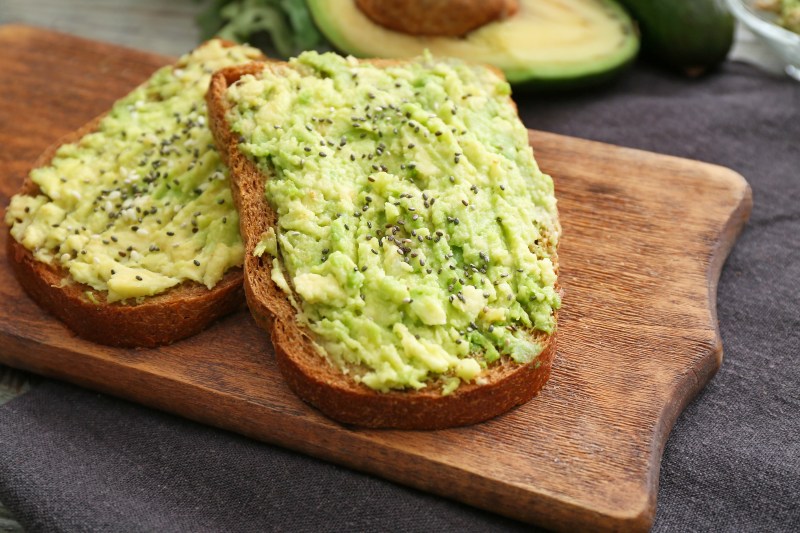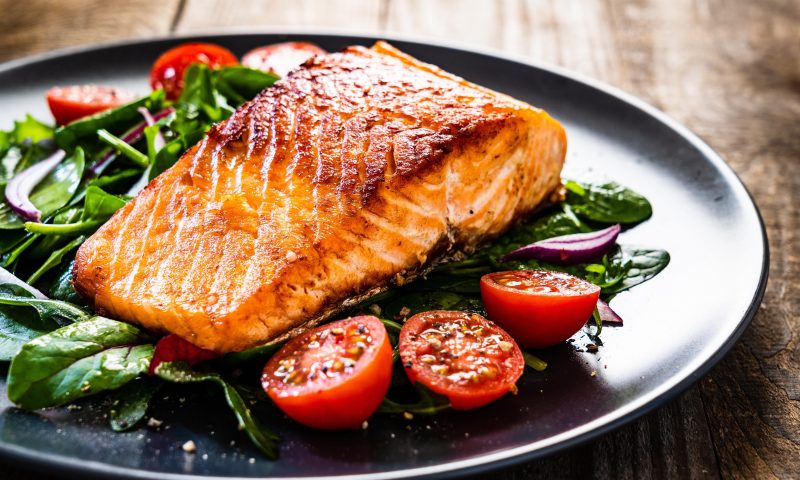As a nutritionist, I always encourage my clients to prioritize nutrient-dense foods whenever possible. These foods contain vitamins, minerals, and other essential nutrients your body needs to function optimally.
A study published by the National Institute of Health finds that “The nutrient density approach is promising as it has been shown that consuming nutrient-dense foods was associated with a modestly decreased risk of CVD, diabetes, and all-cause mortality.”
Hence, most nutrient-dense foods are a pathway to longevity. But it’s easy to be misguided about what constitutes a nutrient-dense food today. Moreover, will only eating nutrient-dense foods make you healthy? We aim to set the record straight in this article and explore nutrient-dense foods you can add to your diet for maximum health.
15 most nutrient-dense foods to include in your diet

- Eggs: Eggs are an excellent source of protein, minerals, and vitamins D, A, and B12.
- Fish: Fish is regarded as a complete protein because it contains the nine essential amino acids. It’s also packed with minerals, vitamins, and omega-3 fatty acids.
- Vegetables: These are nutrient-dense because they contain various vitamins, minerals, fiber, and antioxidants.
- Sweet potatoes: Sweet potatoes are nutrient-dense because they are rich in vitamins A (such as beta carotene), B6, and C. They also contain fiber and are packed with minerals such as potassium and magnesium.
- Legumes: Legumes are excellent sources of protein, iron, zinc, and magnesium, and they are low in fat.
- Avocados: Avocados are rich in monounsaturated fats. They also contain essential vitamins such as A, E, and K. Plus, they are excellent sources of fiber.
- Chia seeds: These are rich in omega-3 acids, protein, and antioxidants such as polyphenols and flavonoids.
- Lentils: These are packed with protein and essential nutrients like potassium, folate, and magnesium.
- Almonds: Almonds are rich in monounsaturated fats and essential nutrients like zinc, iron, and vitamin B3. They are also a good source of antioxidants.
- Beetroot: Beetroots are nutrient-dense because of their high vitamin and mineral content. Examples include manganese, iron, and potassium. They are also rich in antioxidants.
- Garlic: Garlic is a nutrient-dense food because it contains vitamins and minerals, including manganese, iron, and calcium. It’s also a good source of antioxidants.
- Kale: Kale is high in vitamins, minerals, and fiber. It’s also low in calories and rich in antioxidants, which can help reduce your risk of disease.
- Whole grain: Compared to refined grains, whole grains are rich in vitamins B2, B3, and B6. They also contain minerals such as magnesium, iron, and phosphorus.
- Nuts: These contain protein, fiber, and essential vitamins such as vitamins B and E. Nuts also contain antioxidants and minerals like iron, calcium, and selenium.
- Blueberries: These are good sources of fiber and antioxidants such as anthocyanins. Blueberries also contain vitamins C and K, as well as manganese.
What makes a food nutrient-dense?
So you know what the most nutrient-dense foods are, but it’s important to understand the concept behind nutrient density. It’s the amount of vital nutrients a food item contains in relation to its energy content. The key question regarding nutrient density is whether your food contains more essential nutrients than calories, or vice versa.
If your food provides a higher amount of essential nutrients than calories, it is considered nutrient-dense. Otherwise, it is not. The concept behind nutrient-dense foods is to ensure that you don’t consume calories alone. In addition to calories, nutrient-dense foods ensure that you consume essential minerals, vitamins, proteins, antioxidants, and healthy fats.
Will only eating nutrient-dense foods make you healthy?
Eating nutrient-dense foods has several benefits. As we mentioned earlier, they are rich in essential nutrients and do not contain unhealthy fats, sodium, or cholesterol in excess amounts.
Hence, nutrient-dense foods help you reduce your chances of nutrient deficiencies and other health-related concerns. They also improve your mood, increase your energy levels, and help you maintain a healthy weight. But is this all there is to being healthy?
The answer is no. You also have to develop an all-around healthy lifestyle. Getting your diet right is just one piece of a large puzzle. The other pieces include the following:
- Getting enough sleep.
- Drinking plenty of water.
- Consistently engaging in any form of physical activity.
- Going for a regular medical checkup.
- Avoiding a sedentary lifestyle.
Eating healthy without doing any of these will still leave you technically unhealthy, as the body needs movement and care in other forms. So, always keep in mind that the key to a healthy life is not rooted in food alone but in your overall holistic approach.
Do portion control and calories still matter?
Losing weight or maintaining a healthy weight involves conscious efforts to get two things right: physical activity and diet. While going to the gym or staying active and counting daily steps is a step in the right direction, many people don’t give as much attention to their diet. Having a good workout schedule with a poor diet is like building something on nothing; the foundation will collapse.
Weight loss is a game of calories, and you must play it right. Some people think eating healthy alone is enough to lose weight. But did you know that when it comes to weight loss, your body treats a banana and a donut as equal in calories, even if the former benefits your body more?
So, monitoring the calories you consume and reducing your portions are necessary to achieve your desired weight — and the best fitness apps can help with that. Eating less frequently may also be a helpful strategy.
Example meals and snacks that will benefit your health

Crispy Potato Skins:
- 2 medium russet potatoes
- Butter-flavored cooking spray
- ⅛ tablespoon of freshly ground pepper
- 1 tablespoon of minced rosemary
Avocado Deviled Eggs:
- 6 eggs, hard-boiled
- 1 ripe avocado, peeled and pitted
- 1 1/2 teaspoons lime juice
- 3 tablespoons light mayonnaise
- 1 teaspoon chopped parsley
- 2 teaspoons ground cayenne pepper
- 2 cloves fresh garlic, minced
Grilled Salmon:
- 2 fillets of salmon (4 ounces each)
- 1/2 teaspoon salt
- 1/2 teaspoon black pepper
- ⅓ cup jasmine rice
Beetroot and Lentil Salad:
- Ready-cooked beetroot (not pickled or in vinegar), chopped
- 1 tin puy lentils, drained and rinsed (look for no added salt)
- 1 teaspoon horseradish sauce
- 1–2 spring onions, finely chopped
Frequently asked questions
Which food has all 13 vitamins?
No single food provides all 13 vitamins. Rather, they are spread across various foods. Hence, try to include a combination of nutrient-dense foods in your diet.
What is the healthiest food in the world?
There’s no consensus on the healthiest food in the world. However, the nutrient-dense foods mentioned above are excellent examples of healthy foods you can try.
What is the most unhealthy food?
It’s difficult to point to one food as the most unhealthy because that would mean others in the category are lesser evils than that food. Instead, do well to reduce your intake of or cut out processed and sugary foods, junk, sodas, and snacks with empty calories.








